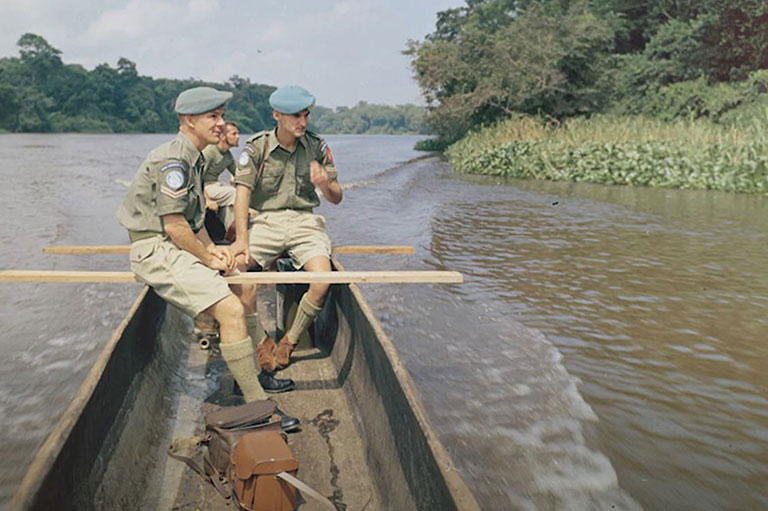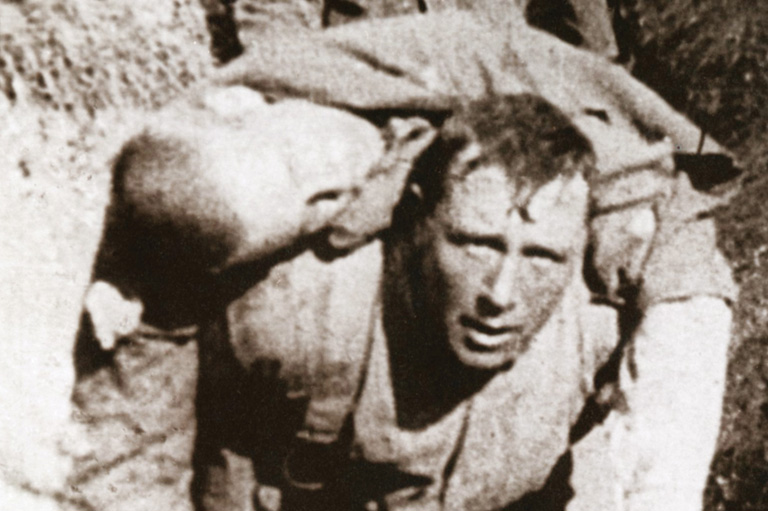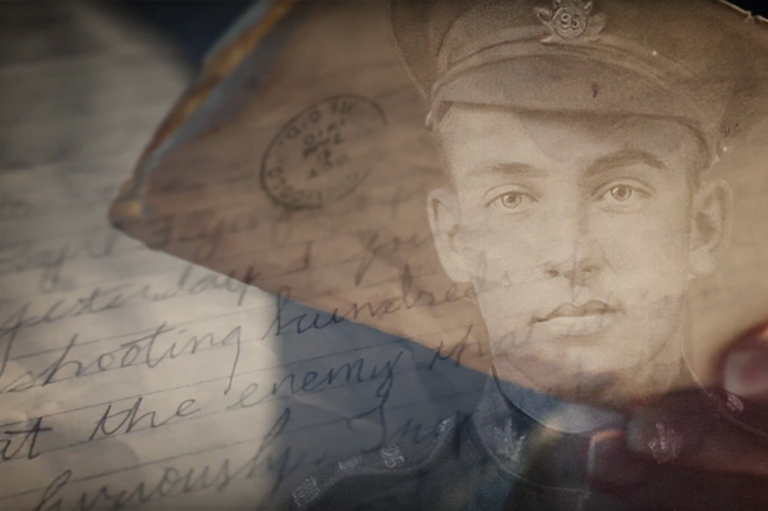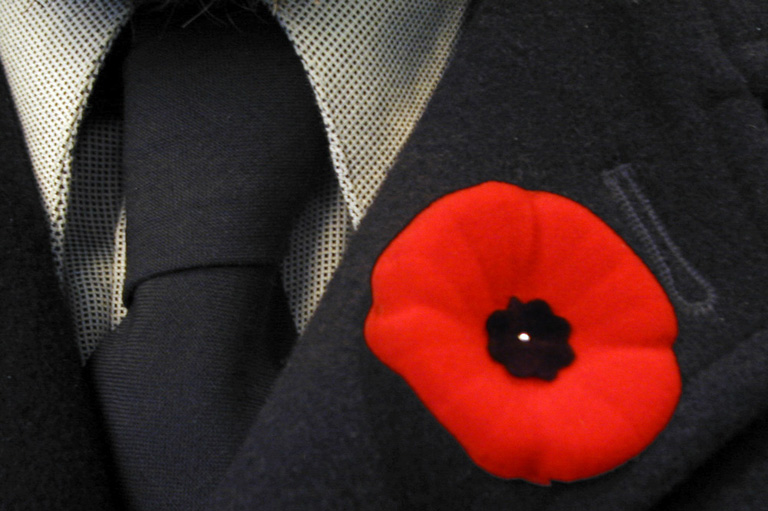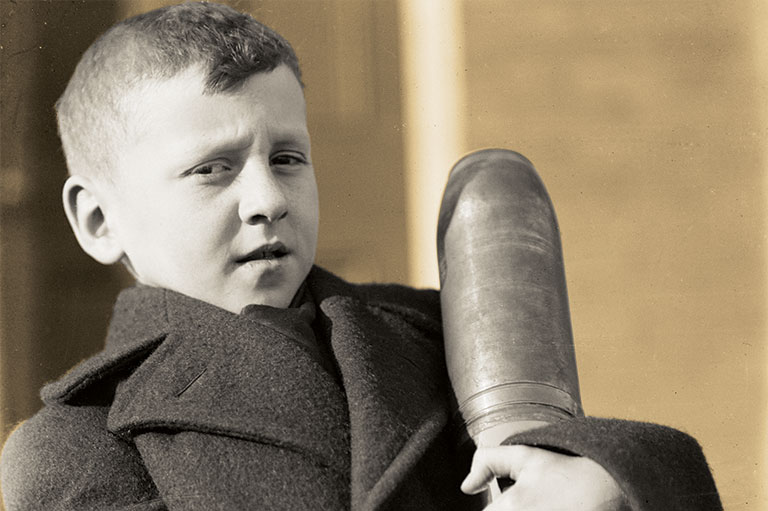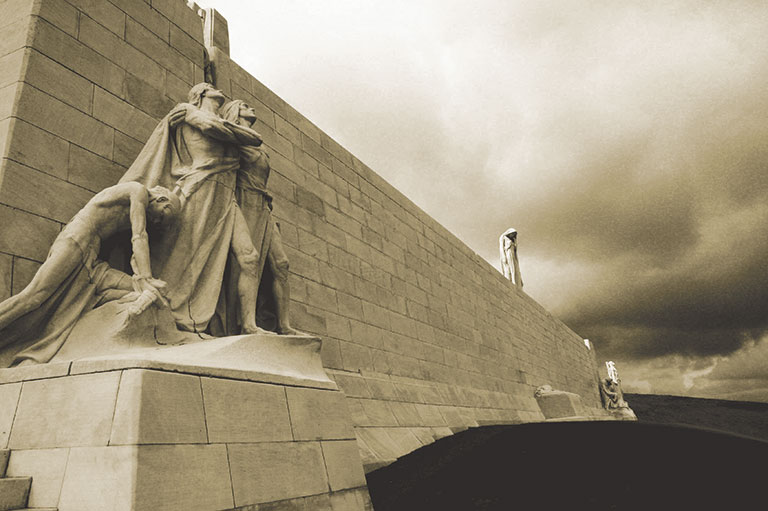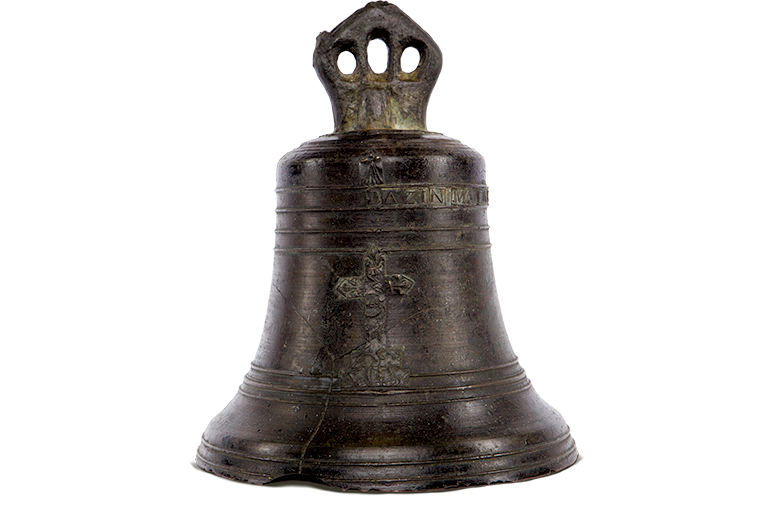Remembrance Day Project
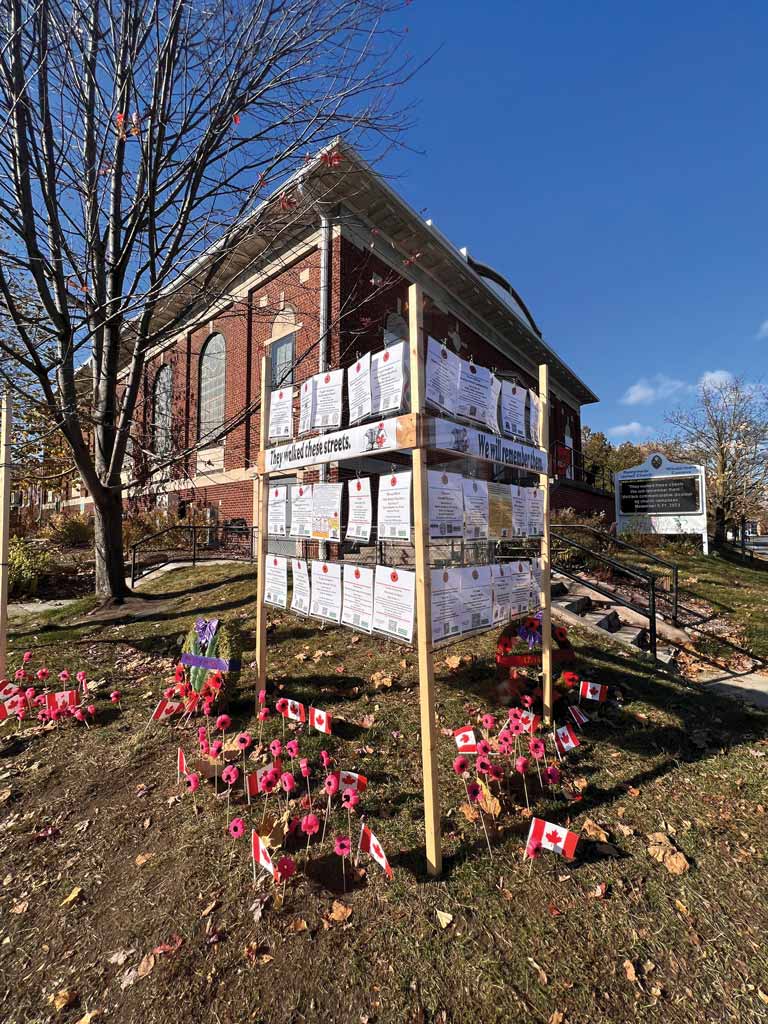
On Remembrance Day last year, I walked with Katy Whitfield along leafy residential Durie Street in the Toronto neighbourhood known as Bloor West Village. Whitfield is a public school teacher and the moving spirit of a project called “They Walked These Streets, We Will Remember Them.”
Later, I returned to walk the street’s full length. I started where the street does, at Morningside Avenue near Lake Ontario. I climbed the hill up to Bloor Street and continued north to where Durie ends at Dundas Street. It’s about 2½ kilometres.
On the way, I passed at least 27 addresses that were homes to young men who went out to serve in Canada’s wars — and never came home. Cpl. Henry Aishford, killed in action in Belgium in 1916, once called 19 Durie home. Cpl. Arthur Bensley, who died of his wounds in 1943 at Casa Berardi, Italy, lived at 703 Durie. Between them lie the houses of 25 other soldiers, sailors and fliers who never returned.
109 DURIE
Sgt. Norman William Barbeau, 20, a youth leader at the local church where he was married in October 1941, killed in the crash of his Spitfire fighter, Dec. 7, 1941, in England.
The streets that cross or parallel Durie, including the one I lived on for 25 years, each have homes where fallen Canadians lived. Durie Street, where you can pass one such house every minute in a 30-minute walk, stands out for sheer numbers — but not by much.
It was from the “They Walked These Streets” initiative that I knew of these men and their homes. Each year around Remembrance Day, Whitfield and her team put up simple memorials outside churches, schools and private residences in their neighbourhood. They display information sheets with names, photos and details about the fallen soldiers from nearby homes, often noting the school or church they attended. Their graves are mostly far away, but their lives suddenly seem very connected to the neighbourhood. Reading just a few of these testimonials can be a moving, even startling, experience.
With 7 uniquely curated newsletters to choose from, we have something for everyone.
115 DURIE
Navigator Wilbert Scott Hignell, 25, a keen skier and tennis player as a youth, lost when his Lancaster bomber failed to return, Jan. 9, 1943.
These memorials are also examples of a new approach that’s been spreading across Canada and reshaping how we do remembrance — new because it’s fuelled by the recent creation of large online databases that document the lives and deaths of Canada’s soldiers.
For many years, history teachers have done Remembrance Day projects by starting with their own school’s war memorial plaque or the local cenotaph and encouraging students to select one name to research. One pioneer of such work is Smiths Falls, Ont., teacher Blake Seward, who started the “Lest We Forget” project in the 1990s. Until recently, such research often required a trip to Ottawa or laborious correspondence with distant archivists. Ian Duncan, a colleague and mentor to Whitfield who teaches in Oakville, Ont., recalls how teachers — like his own mentor, Pam Calvert — used to write letters to Library and Archives Canada in Ottawa and then wait for the various photocopied pages to be mailed back to them.
257 DURIE
Pte. Donald Barrington Taylor, 21, killed in action at Dieppe, Aug. 19, 1942.

The internet changed all that. Today, anyone with online access can go straight to searchable databases where they can enter a surname, choose between a sailor or a pilot or a nurse, and seek out local or distant addresses that once were homes to fallen veterans. Teachers and others have been seizing these online opportunities — and finding meanings there that can seem quite different from standing with a crowd on Nov. 11 to honour all the Canadian war dead together.
“They Walked These Streets” was born in Toronto in November 2020, when Whitfield got a call from her colleague Ian Da Silva. Pandemic restrictions had closed down many public remembrances, but Da Silva and his own young children had discovered they could slice pieces from an old red pool noodle and make each one into a charming poppy on a bamboo-skewer stem. They were thinking of holding a personal memorial on their front lawn by “planting” some of these.
Whitfield offered to give Da Silva notes on a few soldiers from streets near his — including Durie, where she herself had grown up. She had a source; she knew of the online Poppy File, created by Toronto journalist Patrick Cain. He had taken a City of Toronto index-card file of names and addresses of fallen Torontonians and posted the data on an interactive map, with a poppy symbol to mark each home. In a couple of days, Whitfield and the Da Silva family had an improvised Remembrance Day memorial: a lawn blossoming with the Da Silvas’ pool-noodle poppies and Whitfield’s notes on 13 of the neighbourhood’s fallen.
296 DURIE
Seaman Harold Steven Porter, 24, one of 134 who died in the sinking of the destroyer HMCS Ottawa in the North Atlantic, Sept. 13, 1942.
Advertisement
“I live on a street called Colbeck, a popular walking route to a couple of elementary schools in the area, as well as a secondary school,” says Da Silva. “Students and parents coming by began to stop and talk: ‘Oh, he lived on my street’ or ‘That’s my neighbour’s house.’ It’s really been a privilege to see people making connections. It’s powerful how quick people are to share their own stories of remembrance or service.”
The following year, Da Silva and Whitfield posted poppies and info sheets for 60 fallen Canadians, and for 240 the next year, as their own research produced new names and stories. Today “They Walked These Streets” has 1,300 information sheets on fallen Canadians from a broad area of west Toronto.
Responses to the memorials are both strong and surprising. In 2024, Whitfield interviewed Kathleen Lynett, then aged 103, whose brother John Griffin died on active service with the Royal Canadian Air Force in 1942. “It means a great deal to see John’s name, it’s lovely,” said Lynett. “He’s not forgotten. John’s story was lost in time, and this brought it back.”
419 DURIE
Sgt. James Watters, 27, born in Ireland, worked as a teamster in Toronto, killed near Cambrai, France, during the Hundred Days campaign, Sept. 27, 1918.
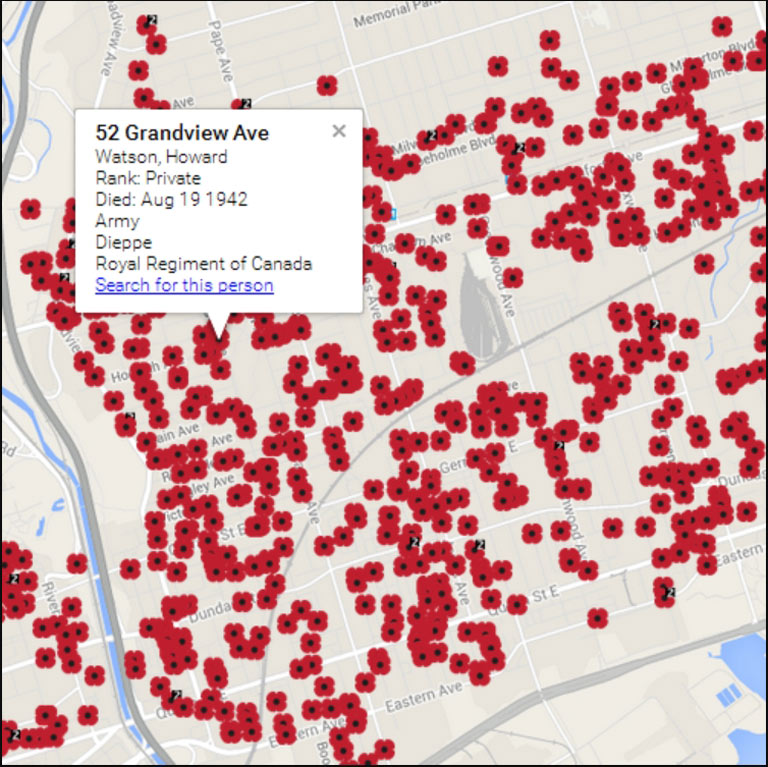
Local personal memorializations such as these depend on ready access to names, dates and individual data. Cain’s Poppy File was an early example of digitization; others include Library and Archives Canada’s military personnel files, Seward’s “Lest We Forget” website and the “Canadian Great War Project.” A key online source is the Canadian Virtual War Memorial (CVWM), run by Veterans Affairs Canada. It pays tribute to each of the more than 118,000 Canadian casualties of war, dating from 1885 (the Nile Expedition) to the recent conflict in Afghanistan. Online since 2000 (“The dawn of the internet!” says Amanda Kelly, a CVWM manager), it was the only national online war memorial in the world until recently. Canadian actor R.H. Thomson cites Canada’s online memorials as an example as he tries to persuade all 34 countries that engaged in the First World War to digitize and display the names of their fallen soldiers in his ambitious “The World Remembers” project — in some cases by opening up handwritten lists no one has looked at in 100 years.
The CVWM has more than two million views and 800,000 extended online visits a year; it distributes print materials to schools, youth groups and legion halls across the country. One feature: It invites site visitors to contribute. Many of the CVWM’s pages preserve personal photos, handwritten letters and other memorabilia alongside the official record.
453 DURIE
Flying Officer Philip Larmour Hayes, 24, died of his wounds at the Christie Street Veterans’ Hospital, Toronto, July 29, 1946, buried at Park Lawn Cemetery in Toronto.
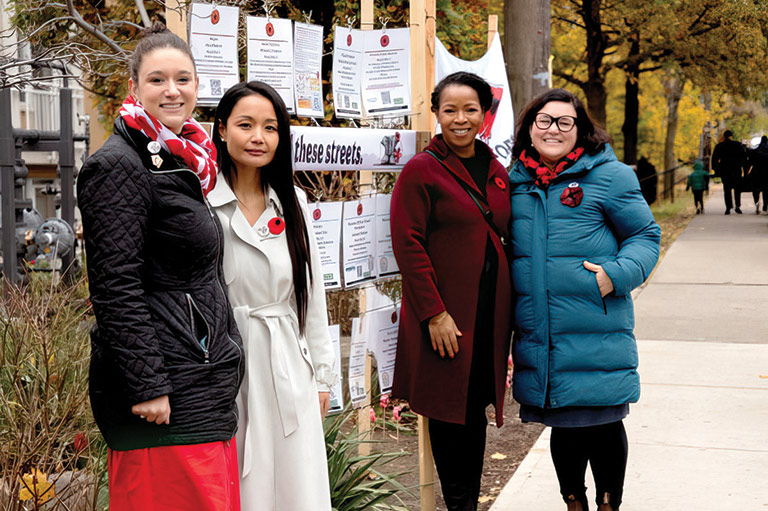
Until the 1950s, Durie Street and its neighbourhood were overwhelmingly British and anglophone in origin — so the name Rocco Speziali of 701 Durie, a lance sergeant killed in Holland in March 1945, stands out in Whitfield’s displays. But the CVWM has been working to ensure that its site responds to the diversity of Canada. It encourages and supports searches for Black and Chinese-Canadian veterans, nursing sisters and many other groups of special interest. It has also been partnering with the Assembly of First Nations to improve the record of the large but uncounted number of Indigenous veterans and casualties from Canada’s wars.
“There aren’t official tallies or databases or even unofficial numbers of Indigenous service people who served during the world wars because the government didn’t track people’s Indigeneity, with the exception of Status Indians,” says Danielle Teillet, Indigenous military historian at the Canadian War Museum. She emphasizes that Indigenous communities across Turtle Island do remember their own veterans, particularly on National Indigenous Veterans Day, observed every Nov. 8, and she salutes several independent online archivists who are building lists of Indigenous veterans and fallen warriors.
513 DURIE
Pte. Charles Jesse Twist, 20, British-born, went “home” to join the British Army, killed at Gallipoli, Aug. 9, 1915.
Save as much as 40% off the cover price! 4 issues per year as low as $29.95. Available in print and digital. Tariff-exempt!
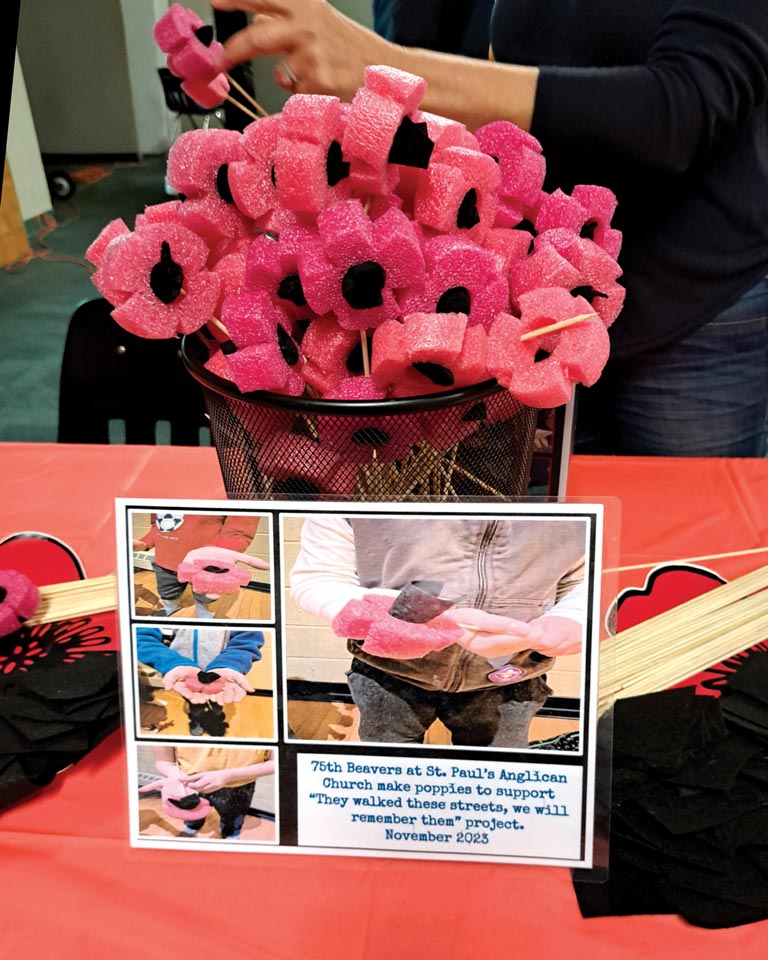
At Westmount High School in Montreal, Chantal Clabrough has done Remembrance Day projects with her students for more than a decade. History, she says, “is a subject that we need to be more hands-on with,” and the value of direct engagement with archived historical sources is immense. As her students used online databases to supplement local knowledge and the school’s memorial plaque, “they were really doing history,” she says. When they research a soldier who was a fellow student who sat in their classrooms, a powerful awareness is born.
Whitfield has made the same discovery. It’s the personal encounter that matters: “I’ve had students shriek at me, ‘He lived on my street!’ ” Many of her students come from families new to Canada and have had little connection to this country’s wars. Yet, months after one Remembrance Day project, one boy approached her just to say quietly, “Ms. Whitfield, this is the day my sailor died.” Students like him don’t forget that one person, she says.
I know what she means. Gregory Joseph Clancy died at the age of 20 on April 16, 1945, in the sinking of HMCS Esquimalt, the last Canadian warship sunk by enemy action in the Second World War. Years ago, I learned from the Poppy File that he lived in the house next to ours almost 50 years before we moved there. An only child, his parents long since dead, he might easily be forgotten. But now he seems like a neighbour. I think of him on Remembrance Day. A kid from our street.
582 DURIE
Pte. John Ross Pollard, 18, dispatch runner, killed in France, Sept. 28, 1916. An obituary noted that he was the grandson of an 1837 rebel who aided William Lyon Mackenzie’s escape.
We hope you’ll help us continue to share fascinating stories about Canada’s past by making a donation to Canada’s History Society today.
We highlight our nation’s diverse past by telling stories that illuminate the people, places, and events that unite us as Canadians, and by making those stories accessible to everyone through our free online content.
We are a registered charity that depends on contributions from readers like you to share inspiring and informative stories with students and citizens of all ages — award-winning stories written by Canada’s top historians, authors, journalists, and history enthusiasts.
Any amount helps, or better yet, start a monthly donation today. Your support makes all the difference. Thank you!
Themes associated with this article
Advertisement


